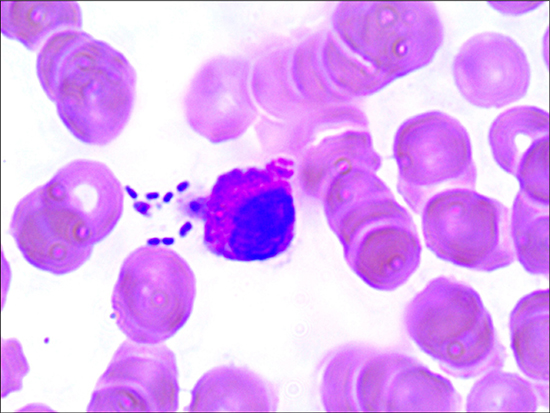
Bacterial phagocytosis is a multistep process involving recognition, attachment, engulfment, and degradation of pathogens. Neutrophils express a large array of receptors (such as Toll-like receptors (TLRs), NOD-like receptors (NLRs), and Dectin-1) that directly recognize microbes. Neutrophil phagocytic mechanisms include Fc-γ receptor-mediated pseudopod extension, in which the neutrophil envelops IgG opsonized targets, and the complement receptor-mediated mechanism, during which targets appear to be engulfed by the phagocyte.
We show neutrophil phagocytosis in a 40-year-old man with an ascending aortic aneurysm. A peripheral blood smear of the patient showed a WBC count of 19.2×109/L with marked neutrophilia of 18.14×109/L, C-reactive protein concentration of 44.1 mg/L, and fever of 38.5℃. Later, blood cultures confirmed the findings, revealing bacteremia caused by Enterobacter aerogenes. The peripheral blood smear shows the plasma membrane of a neutrophil that surrounds its bacterial target. It is also possible to observe a vesicle attached to the bacterial body but detached from the plasma membrane. This probably highlights the occurrence of phagocytic vacuole detachment after bacterial binding to the neutrophil outer membrane receptors, but prior to closure of the endocytic vacuole. Further studies will clarify if these detachments are related to the bacterial capsule.




 PDF
PDF ePub
ePub Citation
Citation Print
Print


 XML Download
XML Download